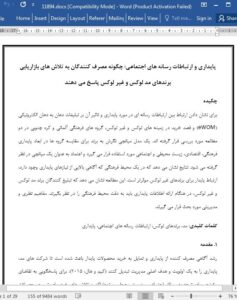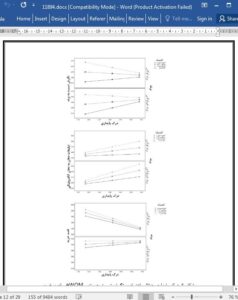Abstract
German and South Korean cultural groups are examined in two studies to demonstrate the link between media communication about sustainability and its impact on eWOM and purchase intentions in luxury and non-luxury contexts. A mediation brand attitude model is used to compare groups across cultural, economic, environmental, and social sustainability dimensions, with trust as a moderator. Results indicate that sustainable communication is more effective for non-luxury brands in a cultural setting that features high awareness of needs for sustainability. The study indicates that luxury and non-luxury fashion brand advertisers should carefully consider cultural settings when providing sustainability information. Theoretical and managerial implications are discussed.
1. Introduction
Growing consumer awareness of sustainability and desires to purchase sustainable products has caused fashion companies to make sustainability a priority and core management objective (Kim & Hall, 2015). To meet consumer demands for attention to social and environmental issues, brands now advertise their efforts to develop sustainable products (Han, Seo, & Ko, 2017; Jang, Ko, Chun, & Lee, 2012) and to show corporate social responsibility (CSR) (Aoki, Obeng, Borders, & Lester, 2019; Fineman, 2001; Minton, Lee, Orth, Kim, & Kahle, 2012). In the last several years, fashion brands have recognized that social media channels are valuable for interacting with consumers, building brand-consumer relationships, and facilitating consumer decision making (Kim & Ko, 2010; Pentina, Guilloux, & Micu, 2018). By motivating consumers to interact with brands, social media channels create brand equity, positive word-of-mouth, brand loyalty, and purchase intentions (Ko & Megehee, 2012).
7. Limitations
The present study has several limitations. Although trust was found to be a boundary condition for the positive effect of sustainability, the underlying mechanisms are speculations. Further research should investigate why consumers who have high trust and sustainability perceptions would have diluted brand evaluations. Moreover, rather than use only two brands to represent the non-luxury and luxury brand conditions, researchers should investigate whether an experimental design using different brands would change the pattern of sustainability dimensions. Cognition and affect have been shown to guide brand evaluation, but future studies could explore how extensively they affect the processing of sustainable information for non-luxury and luxury brands. Such research would help brand managers frame messages in ways that will trigger the desired cognitive and affective processes.











